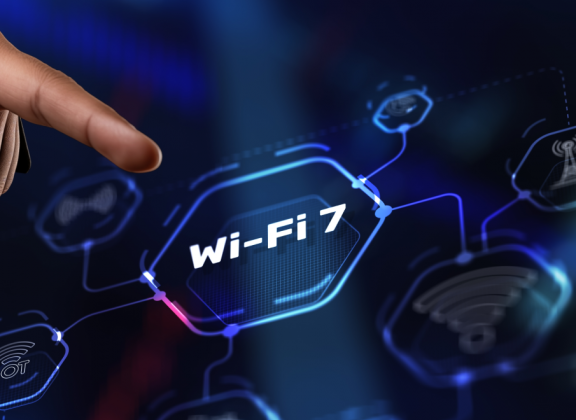As new wireless standards continue to reshape the landscape of home networking, consumers are left wondering whether they should upgrade now—or wait for what’s next. Wi-Fi 6E is already available in some routers and devices, and Wi-Fi 7 is rapidly approaching commercial readiness. With marketing focused on raw speed, low latency, and cutting-edge features, it’s easy to assume that any older setup is suddenly obsolete. But when it comes to IPTV set-top boxes and media streamers, do these advanced technologies offer tangible benefits? Or are they simply more than most households need?
This article breaks down the technical reality behind these standards and examines their real-world value for IPTV streaming.
A Closer Look at the Latest Wireless Standards
Wi-Fi standards evolve to meet increasingly complex demands in digital environments. Wi-Fi 6E adds access to the 6 GHz band, offering greater spectrum and reduced interference. Wi-Fi 7 builds on this with wider channels, improved efficiency, and Multi-Link Operation—enabling devices to send and receive data across multiple bands simultaneously. These upgrades are undeniably significant for enterprise networks, advanced smart homes, or environments with high traffic density. But when considering their application in a typical IPTV streaming scenario, things look different. The bandwidth required to stream even 4K video is modest by modern standards—usually between 15 and 25 Mbps—and well within the capabilities of Wi-Fi 5 or Wi-Fi 6.
Unless your IPTV setup is part of an unusually congested or bandwidth-heavy environment, the advantages of Wi-Fi 6E and Wi-Fi 7 may never truly be felt.
Streaming Performance: What Does an IPTV Box Really Need?
IPTV traffic is mostly consistent and predictable. It doesn’t require ultra-low latency, nor does it need gigabit-level speeds. What it demands is reliability, signal strength, and low packet loss. Wi-Fi 5 and Wi-Fi 6, already widespread in modern routers and devices, deliver more than enough throughput for even high-resolution streams.
Wi-Fi 6E introduces a new frequency range, offering more bandwidth with fewer competing signals. But this advantage is mostly noticeable in crowded environments like apartment complexes or tech-heavy households. Even then, the 6 GHz band has limited penetration through walls and furniture, making range and placement more important than protocol generation.
Unless your IPTV device specifically supports 6E and operates near a compatible router, the practical benefits of this newer standard are limited. In the absence of a direct line-of-sight connection or a particularly noisy wireless environment, traditional Wi-Fi frequencies often remain more effective.
Wi-Fi 7: Built for the Future, but Not for Every Use Case
The capabilities promised by Wi-Fi 7 are impressive. Ultra-wide 320 MHz channels, higher modulation schemes, and advanced link aggregation techniques mean it can theoretically handle many times the traffic of current standards. This is great news for multi-user gaming, real-time communications, and VR—but less critical for IPTV streaming.
Even in a future where 8K video becomes commonplace, Wi-Fi 6 and 6E are still likely to meet demand, especially given the compression techniques used in video delivery. Furthermore, streaming services themselves remain limited by content licensing and production capabilities. As such, the road to mass-market 8K streaming may be longer than expected.
While early adopters may see value in future-proofing their network, the average IPTV user will not unlock the full potential of Wi-Fi 7 for quite some time.
Real-World Conditions Matter More Than Technical Specs
Theoretical advantages often fail to reflect practical realities. The quality of your IPTV streaming depends more on stable signal coverage, intelligent router placement, and the strength of your internet provider’s connection than on whether your router supports Wi-Fi 6E or Wi-Fi 7.
It’s also crucial to remember that Wi-Fi benefits are only realized when both ends—router and receiving device—support the same standard. Many IPTV boxes still rely on Wi-Fi 5, and even newer ones may not be fully optimized for newer bands.
Instead of chasing the latest spec, users often see better performance gains by eliminating physical barriers, reducing local interference, or opting for wired Ethernet connections where feasible.
Wi-Fi 6E and Wi-Fi 7 bring genuine advancements to wireless networking, but those advances are far more relevant to complex, high-demand applications than to IPTV streaming. Unless you have an unusually congested network or live in a high-density environment, your current Wi-Fi 5 or Wi-Fi 6 setup will likely continue to provide a smooth and stable streaming experience.
For now, upgrading your IPTV box or router purely for the sake of newer Wi-Fi standards is unlikely to result in a meaningful improvement. Instead, focus on optimizing what you already have. A reliable internet connection, a well-placed router, and a compatible device will do far more for your viewing experience than the promise of theoretical bandwidth you’ll never fully use.
